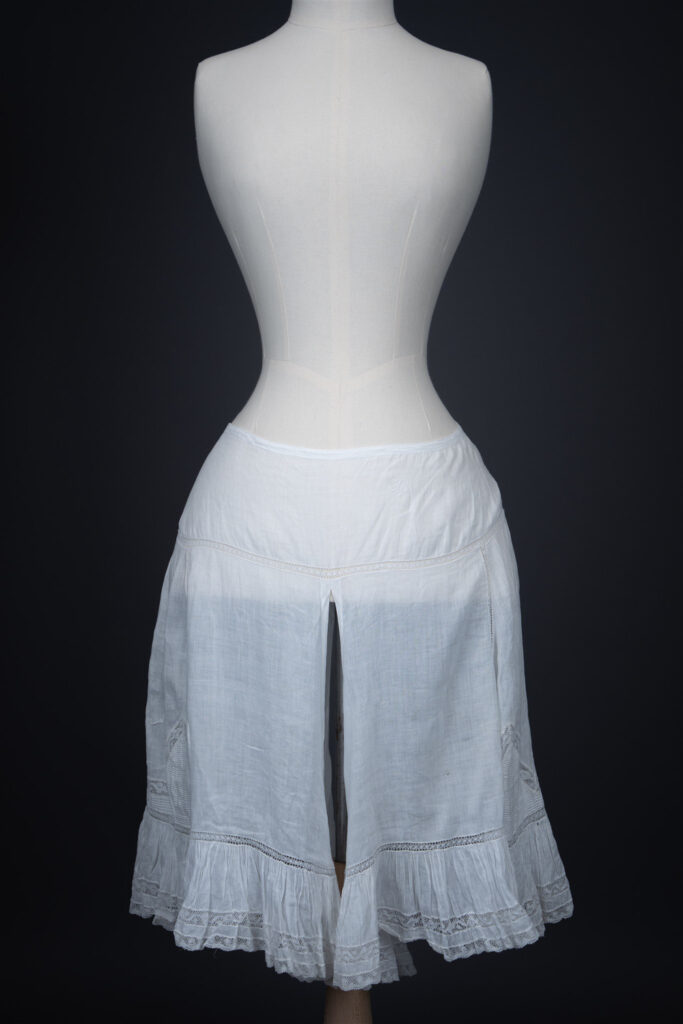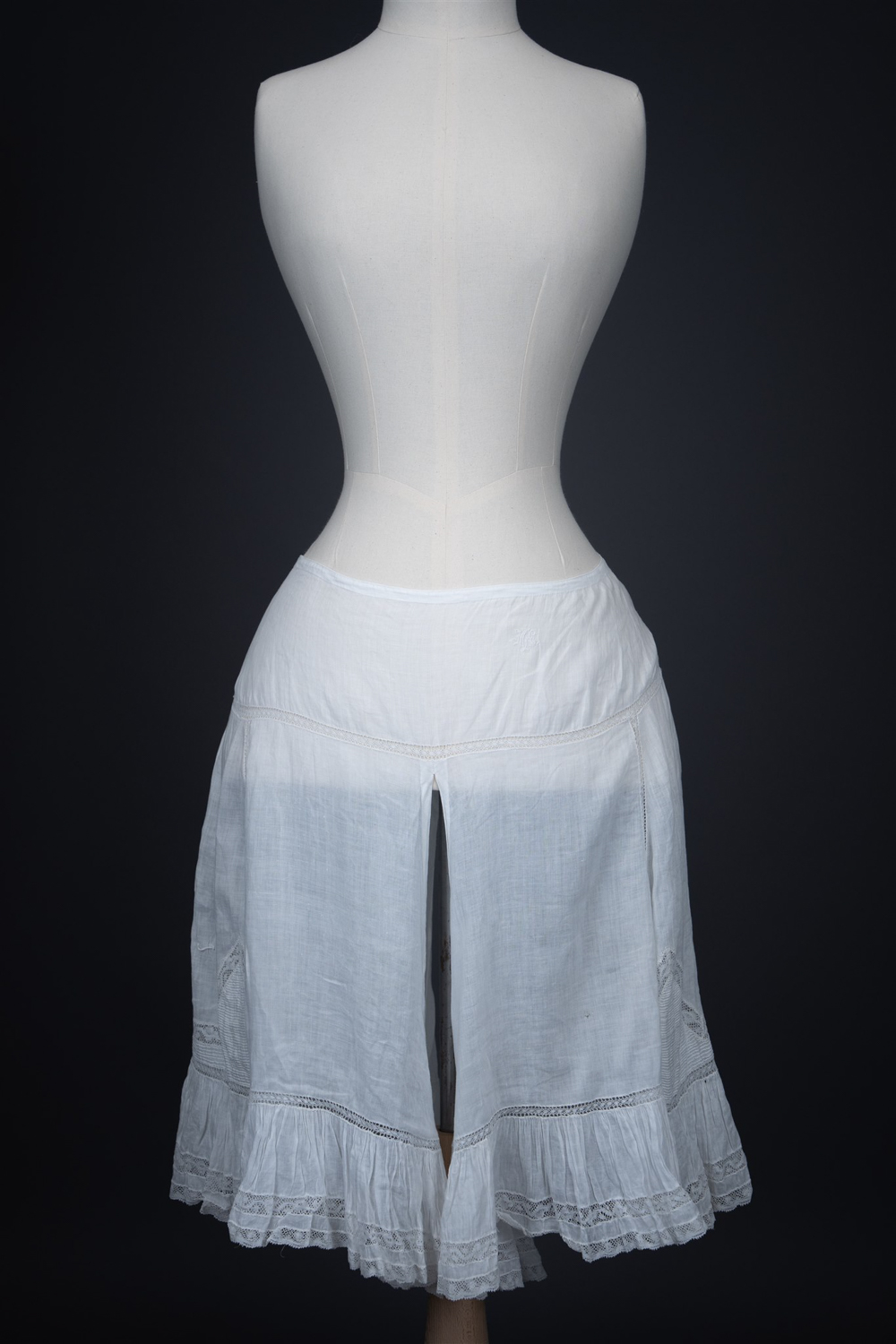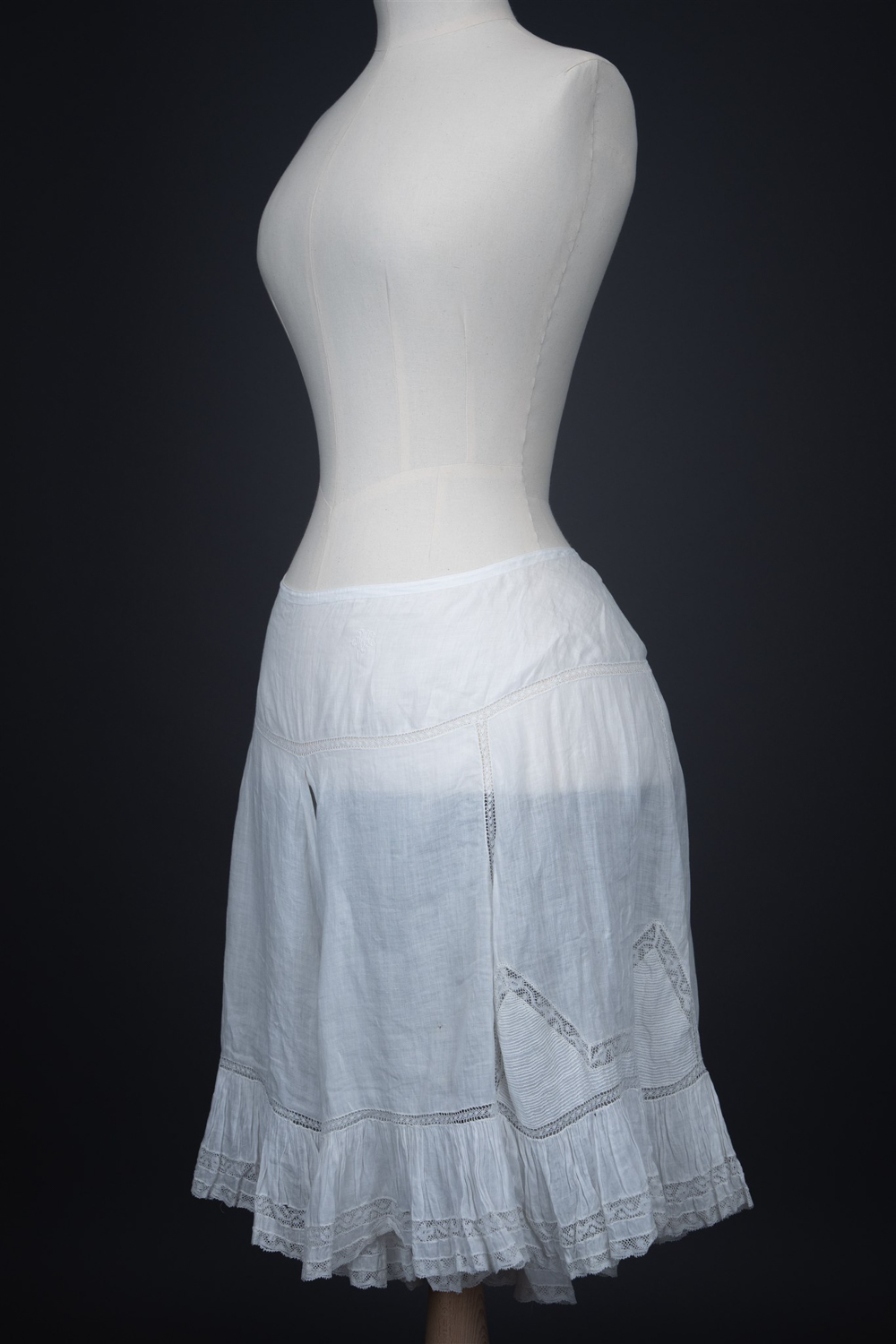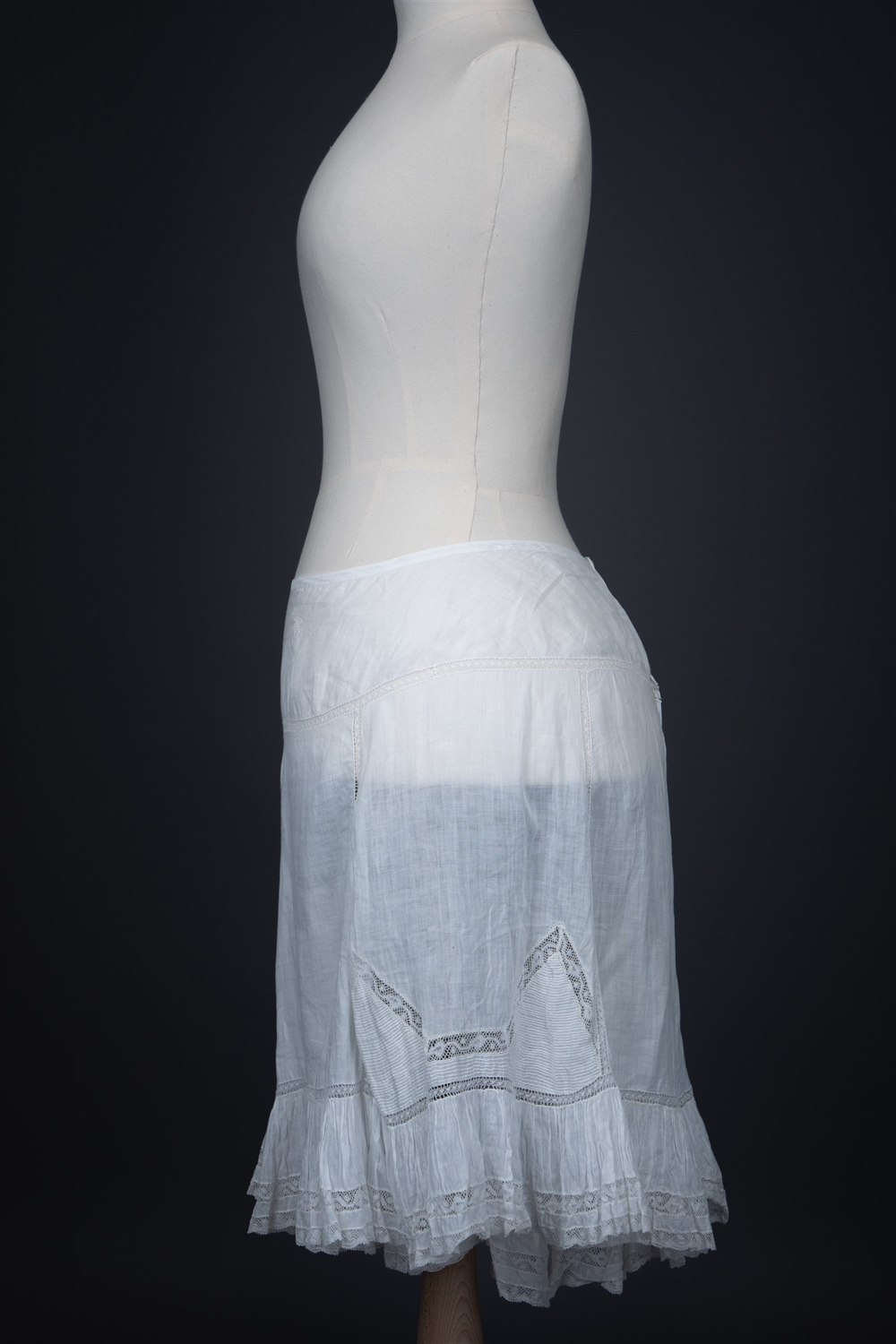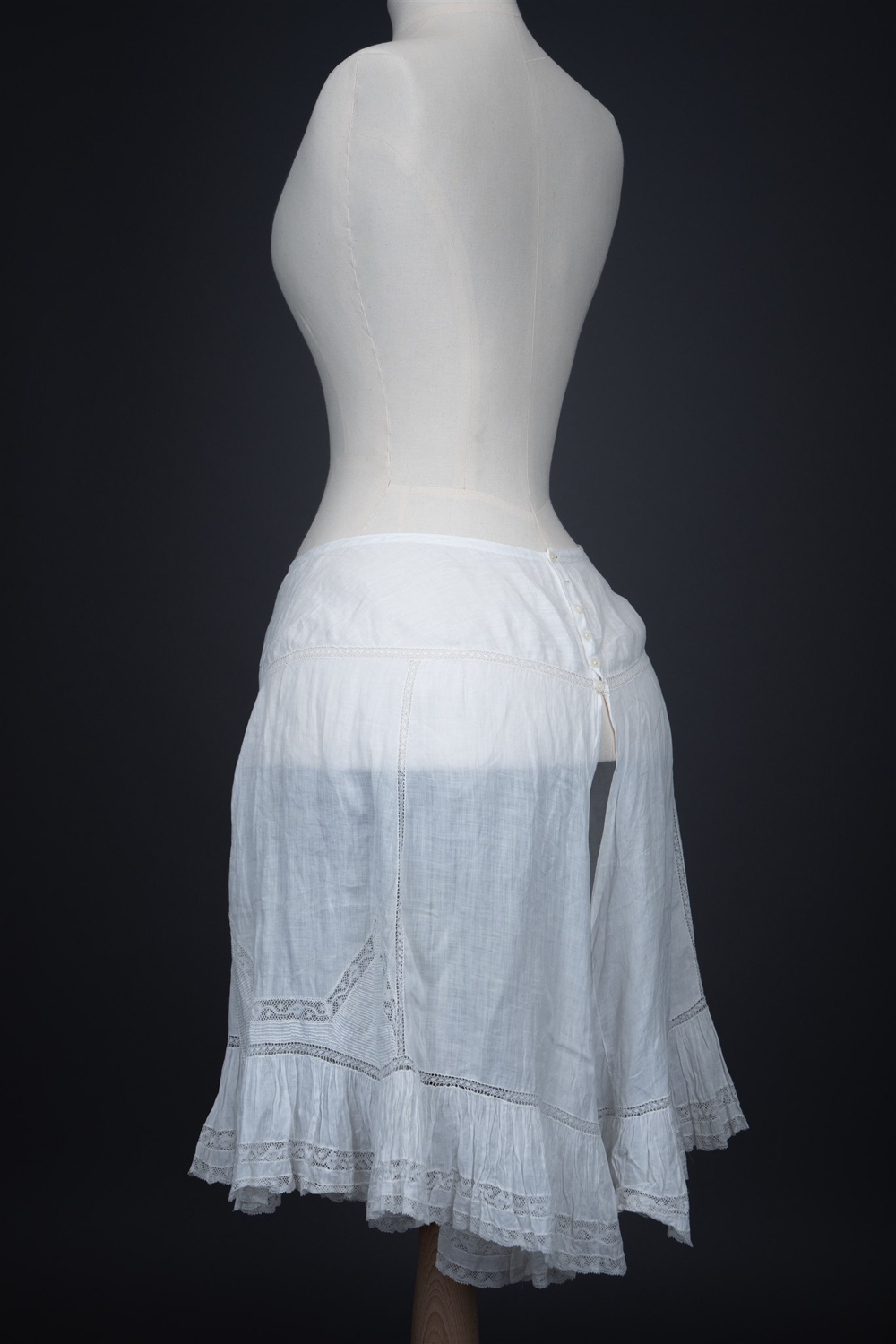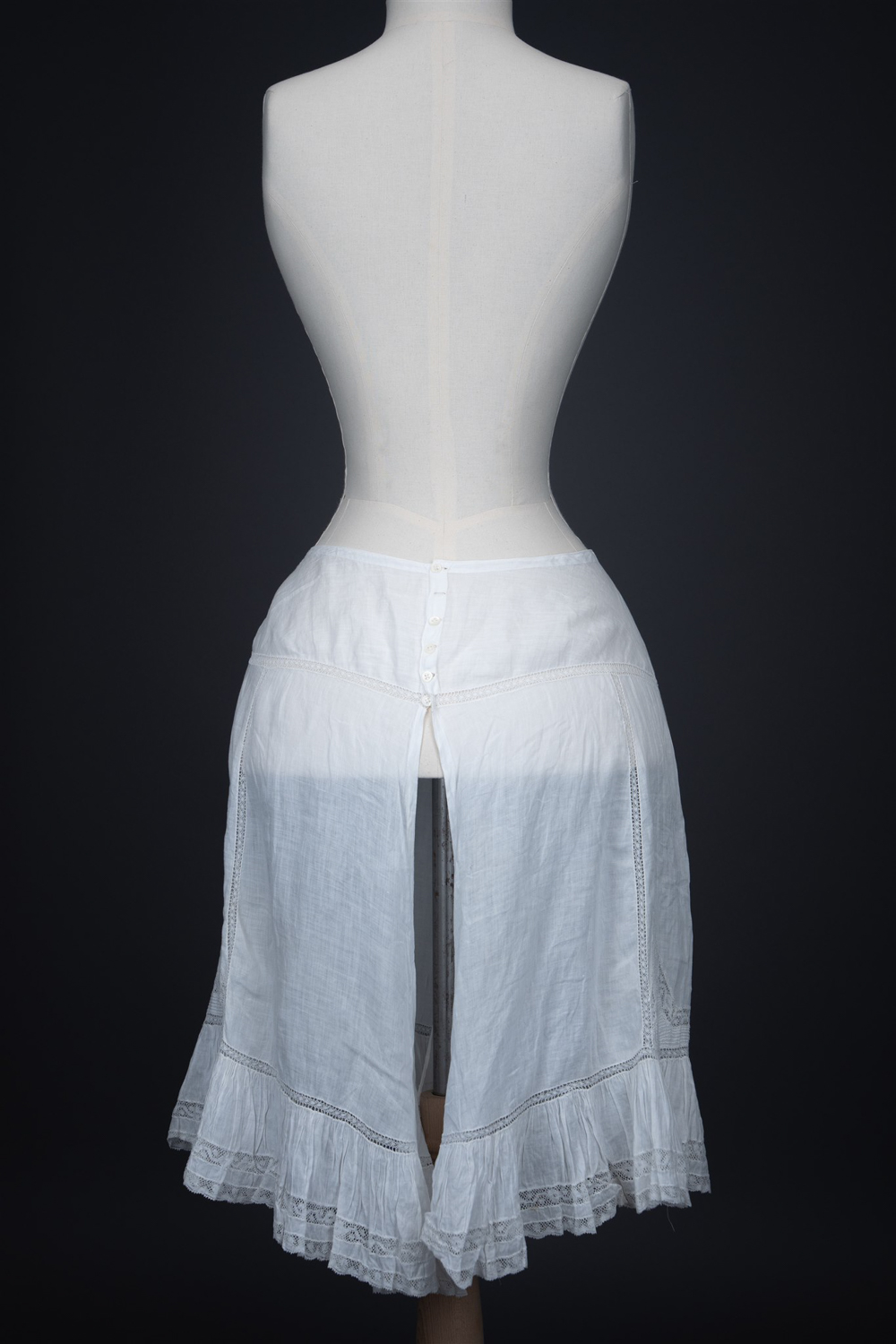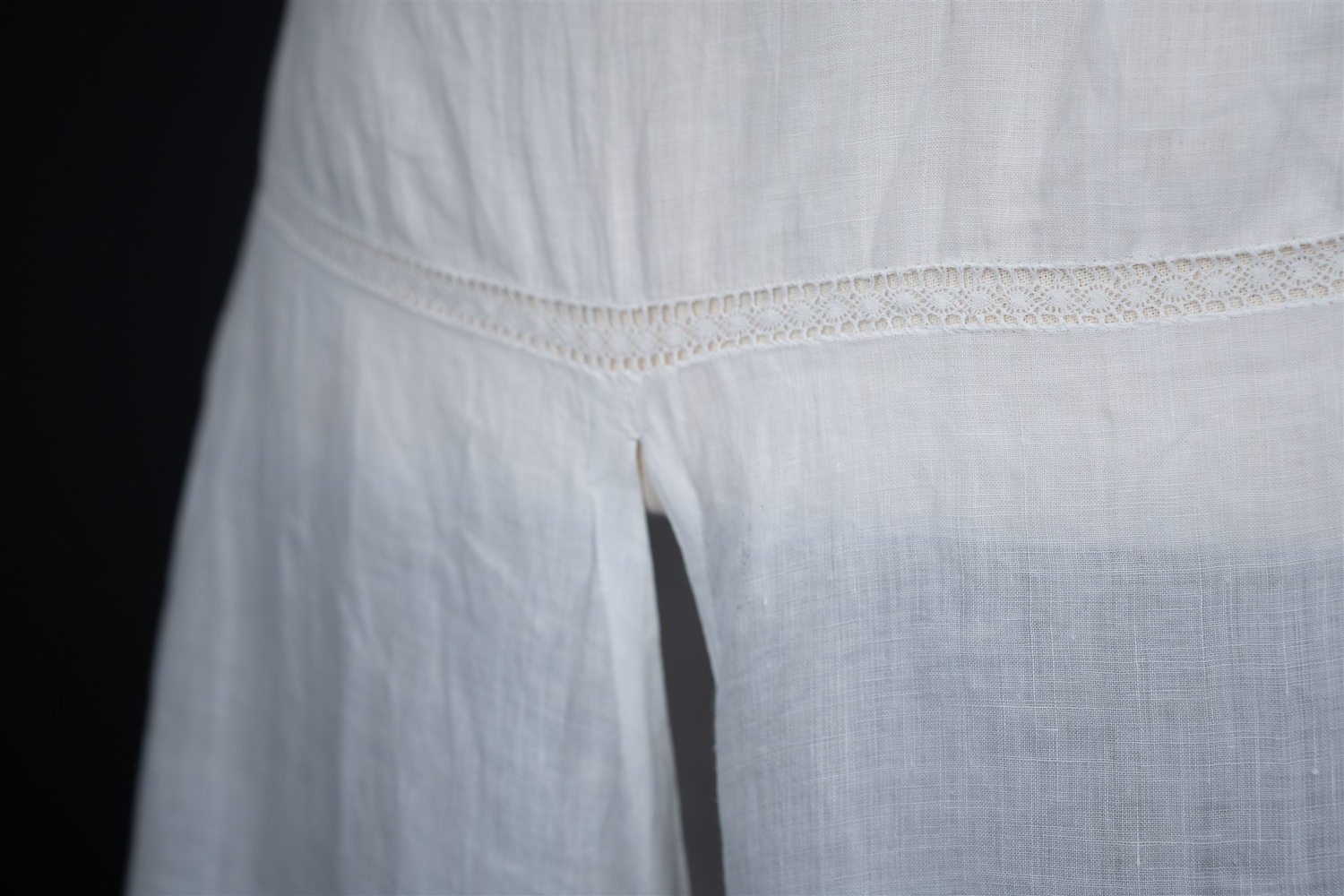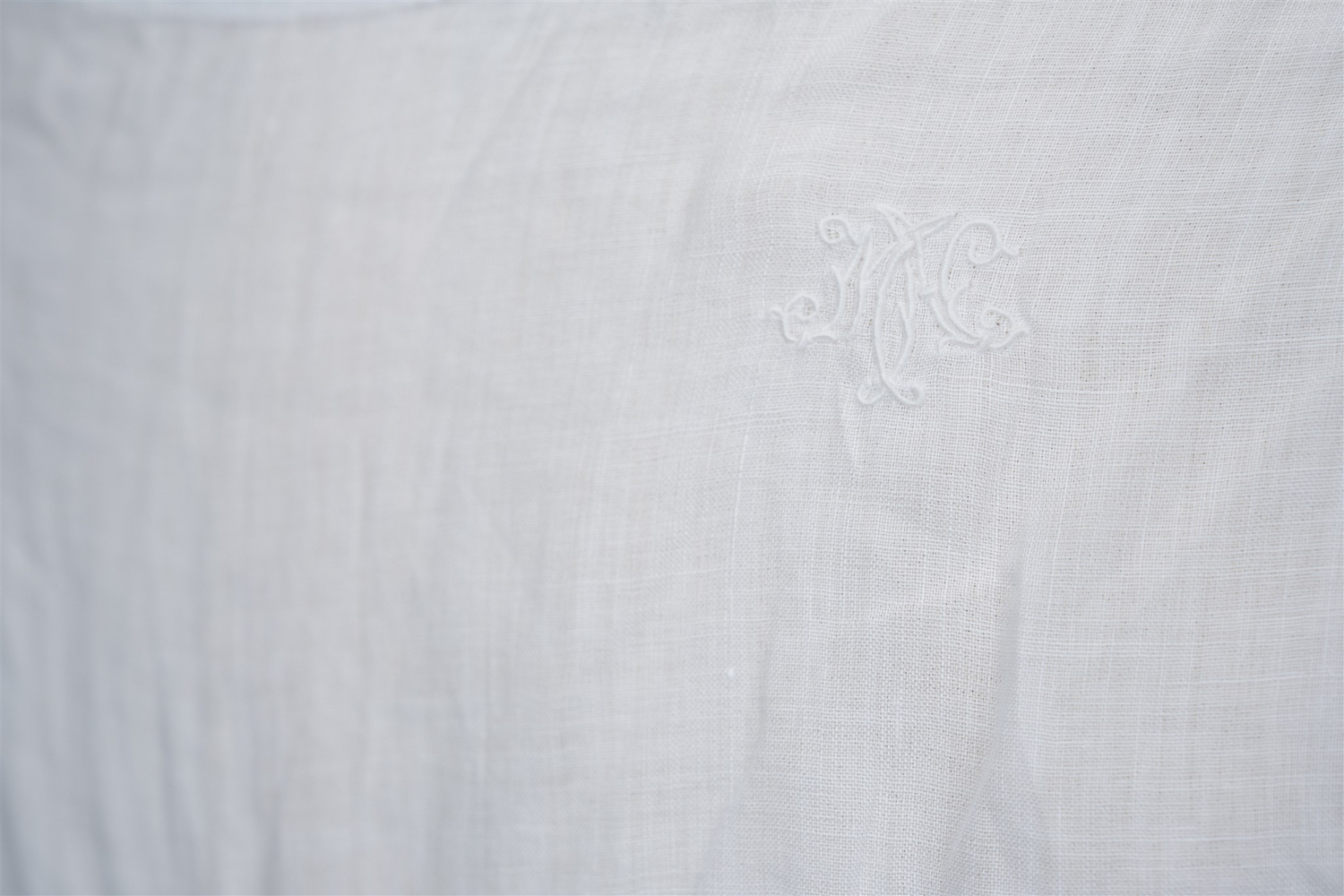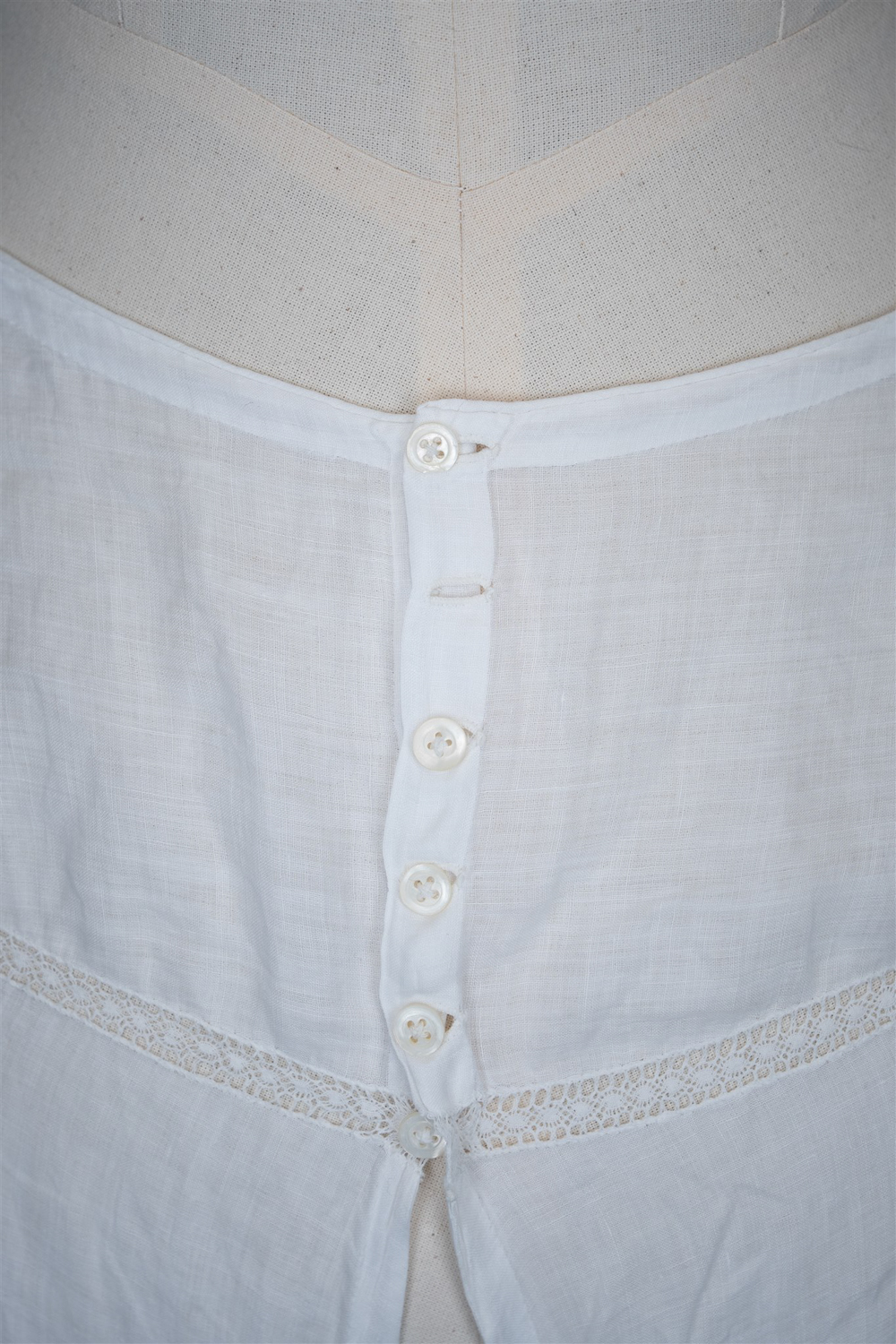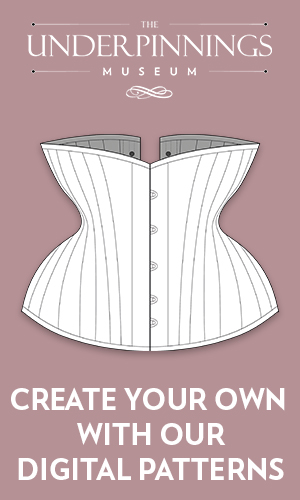Date: c. 1900s
Origin: Unknown
Fabric: Cotton lawn
Brand: Unknown
These unbranded hand stitched cotton lawn open drawers with valenciennes lace and pin tucks date to approximately 1900. Across Europe and the United States, split drawers were commonly worn around, and just after the turn of the century, with the open cut a functional necessity when worn with the multiple layers of fashionable outerwear.
Women’s fashions of the time included dresses (generally one piece), with bodices and skirts sewn together at the waistline, often in an “S” shape, with a high boned collar. Skirts were mostly flat in the front, emphasizing a rounded hipline in the back. Apart from tailor-made and shirtwaist styles, an emphasis on frilly and highly-decorated clothing required soft fabrics, and were frequently highly-decorative. Ornamentations varied, including tucking, pleating, lace insertions, bands of applied fabric, lace, and embroidery.
During this time period, underwear that was worn against the skin was usually made of fabrics such as linen and cotton for ease of washing; laundry was usually a relatively harsh process, with strong soaps and boiling water. Undergarments would absorb sweat and bodily oils, and were washed often, as it was difficult to effectively clean the more decorative fabrics of outer garments.
This common style of women’s underwear often came in exquisite combinations of fine white cotton, elaborately embroidered in whitework, trimmed with lace and with narrow ribbon drawstrings as well as button closures at the waistline. Frilly, decorative petticoats and drawers were popular undergarments for women between the years of 1900-1908. Eyelet lace insertion in shades of white, ivory, pink, and blue threaded through was a popular trim for all kinds of underclothing, as were ruffles and lace edging.
These drawers, relative to others of the time, are humbly embellished, with each leg cuff boasting only several rows of fine Valentines insertion lace appliqué. The waistband fastens at the center back with five buttons, and is currently missing one. They also include embroidered initials in whitework–called “laundry marks.” This practice refers to making small identifying marks on undergarments, sometimes symbols and often initials, stitched, inked or stamped – intended to distinguish similar looking garments from one another. Marking was also used to identify a person’s or family’s property, especially if something was being sent to be laundered. Some people marked a garment with two or three initials relating to their family name, which most likely accounts for the stitched lettering on these drawers.
From the collection of Karolina Laskowska.
Many thanks to Liv Elniski for the object description.
